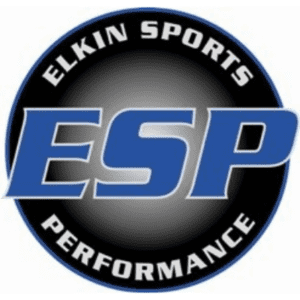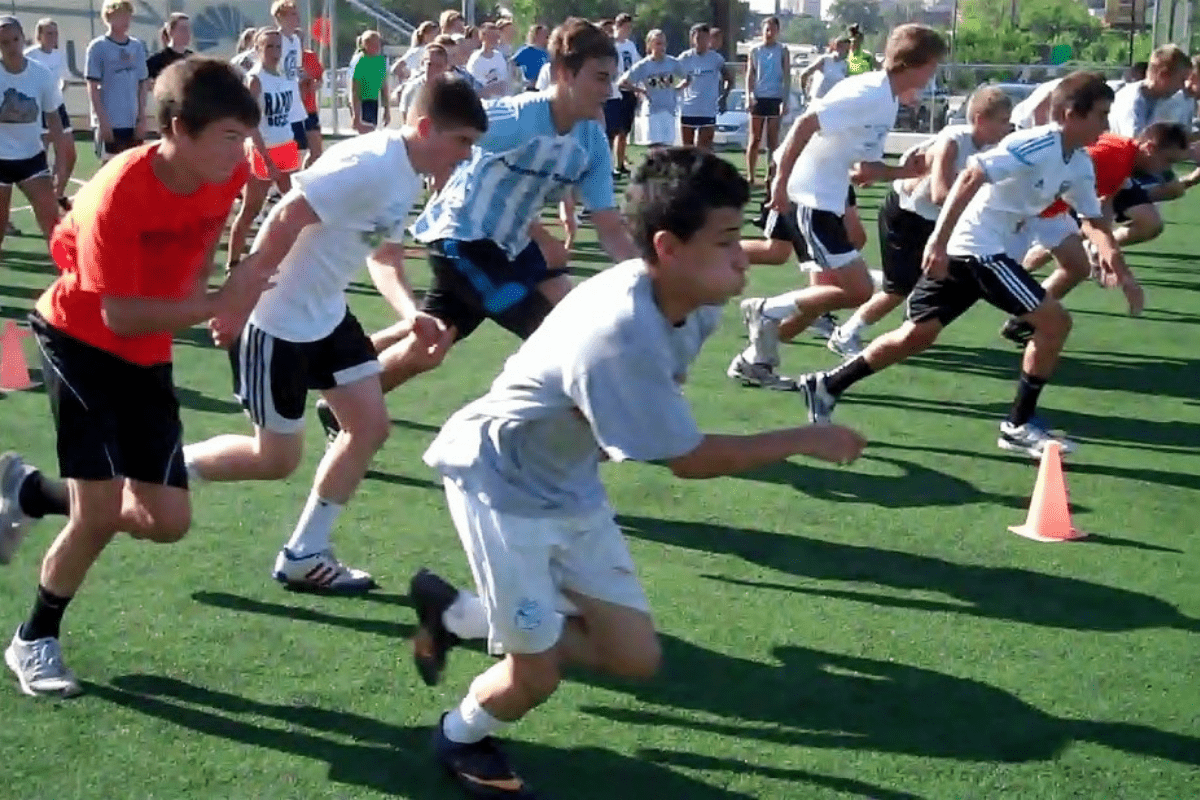The question of when can my athlete start a strength and conditioning program is one that I get asked multiple times each week.
This is a great question and has a few parts to it. Many parents want their young athlete to run faster to be more productive in the sport of choice. To run faster, the athlete will need to have base strength levels to apply force into the ground.
With proper mechanics being developed at a young age and strength levels progressing, the athlete, over time will see big gains.
Furthermore, if the proper techniques of running, strength training and agility work are properly taught, when the athlete matures through the pubescent stage, they will see great results.
The key is consistency within any program and this includes young athletes as well.
When Should an Athlete Begin a Strength Training Program?
First, because it is the myth that seems to never go away and something I get asked as much as anything – No, resistance training is not harmful for youth athletes. No, it will not stunt their growth or any of the other stigmas that are associated with weight training with young athletes.
This myth has been debunked time and time again.
time and time again.
Having said that, where you can go wrong with youth athletes is by not teaching proper technique or trying to progress with weight too quickly.
Start Young Athletes With Bodyweight Exercises
I like to start young athletes with base body weight strength exercises.
As said earlier, to get faster the athlete needs to have a base strength level. The athlete must first learn to master a body weight squat.
The athlete will have feet hip to shoulder width apart, keep a flat back and sit down on their heels while maintaining a solid body posture. This form will be duplicated as they get older and start working with actual weights.
Next is a body weight pushup. This exercise will help to determine core and upper body strength. The hands will be next to their chest and the athlete will lower themselves down, keep a flat back and push themselves back to the starting position.
The next two exercises are the full sit up for core strength and a full pull up. We know that the pull up is a very hard exercise and if an athlete cannot master at least one, we will begin with standing on a band to offer assistance in performing this exercise.
What Age Should a Youth Athlete Start Lifting Weights?
We’ve talked about bodyweight exercises, but what about lifting actual weights?
When is a good time for athletes to begin lifting weights?
In my opinion, this is more a matter of level of maturity than it is a matter of age.
We’re going to be starting out with VERY light weight at the beginning and teaching proper lifting fundamentals so the athlete doesn’t get injured.
My focus with a youth athlete just getting started with lifting weights is are they able to focus for an extended period of time?
Can they focus on listening to instruction from the coach? Can they focus on trying to apply the coaching they are receiving when performing the exercise? Can they stay focused on the task from set to set and rep to rep?
If the answer is yes, then that athlete is probably ready to perform lifting light weights with the goal of learning technique and in my facility we’ll start athletes as early as 7 years old.
If the answer is no, and the athlete begins chasing butterflies every 30 seconds, then we’ll stick to bodyweight exercises and make sure the athlete is still enjoying the process of training.
What age should you start conditioning?
Nothing drives me more crazy than watching a group of 9 year olds lined up on a line and doing sprints for the sake of doing sprints.
Conditioning does NOT have to mean running wind sprints or jogging laps.
With our youth athletes, we like to incorporate “conditioning” into our running activities like speed training, agilities and plyometrics.
Speed Training for Youth Athletes
In our young age group, our goals for speed training will be set for the athlete to have a solid grasp of basic speed mechanics like:
- Proper starting position
- How to perform the arm swing when running
- Proper leg and foot position
- Proper body position
- How to knee punch
- Learning where the ball of the foot should land when running.
Most of the athletes at this age are competing in multiple sports so any strength and conditioning program will help them in the sport of choice. All will need agility training as well. This is the ability to start stop and accelerate in multiple directions.
Agility Training for Youth Athletes
Our goals of our agility program will be to teach how to plant the foot correctly before acceleration. How to change the running pattern off of reaction such as a shuffle into a back peddle into a sprint. We want the athlete to be able to demonstrate a fluid motion as they change direction.
Many athletes at this age do not know how to control their body while performing a jump. This is a great way to help teach explosiveness at a young age.
The athlete will learn to use the arms to accelerate upwards or forward. The athlete should learn how to jump and land with both feet then progress into jumping and landing on one foot.
The main focus for the 7–10-year-old is to have a great understanding of proper body position for speed work, how to plant and accelerate correctly in agility training, how to control their body in jumping and landing and how to properly perform the base bodyweight strength exercises.
Now that we have laid a solid foundation from our 7–10-year-old group we will look to progress the athlete through middle school so they will be ready to compete at a very high level in high school.
Should an athlete start the training at this age rather than the 7–10-year-old group, we must first teach the protocols learned in the younger group before they can progress into the full 11-14 goals.
The biggest difference is the athlete can push faster through basics as long as they have a firm grasp of the concepts.
When teaching the 11–14-year-old speed training we will utilize the same progressions learned at an early age of proper body position, where to line up for a sound start, continued development of arm action, foot placement and knee punch.
The next step is to teach how to properly run the first 20 yards of a 40-yard dash. The 40-yard dash is a test that the athlete will be asked to perform throughout high school especially if they compete in football.
The next phase of agility training is for the athlete to be competent in cone, ladder, hurdle and bag drills.
This drill will be used for the athlete to truly develop their change of direction and where and how to plant the foot before resuming acceleration. The middle school athlete can really work hard during these exercises to develop quickness.
Plyometrics for Youth Athletes
Jump training becomes more important during this age group. The athlete should always continue to work on body position and arm action while performing jump training. They will use the arms to accelerate upwards and out.
Performing a jump while landing on both feet should be a set baseline at this point with the mastery of landing on one foot consistently being worked on. In this age group the athlete will work on the vertical and broad jump as these are tests that will be performed at different events.
For training, the athlete will learn how to perform a tuck jump in place, single leg hops both forward and lateral to help with ankle and body stability.
Final Thoughts
In conclusion, an athlete can start a strength and conditioning program if it is consistent, supervised and has a sound plan of attack that is age specific. The age specificity should be what the program is geared to not sport specific at the young age.

